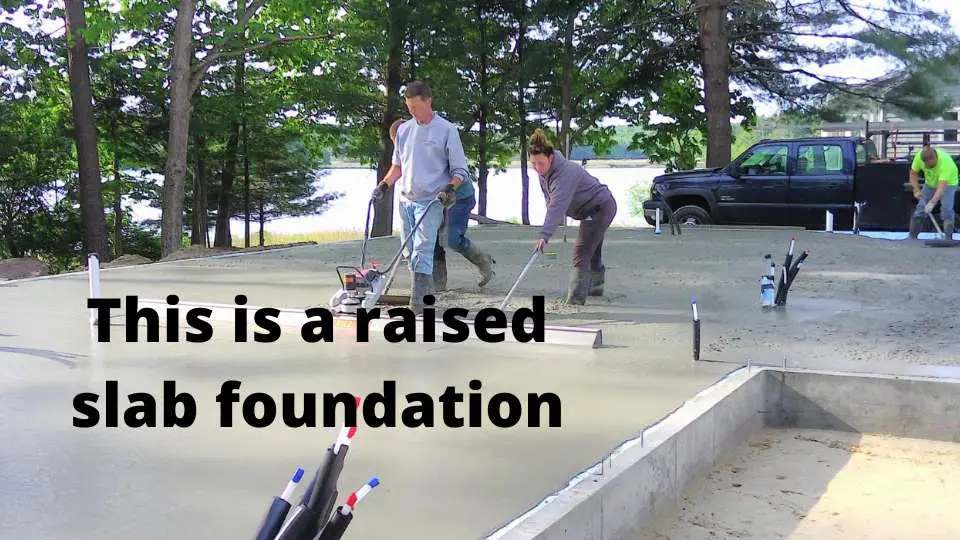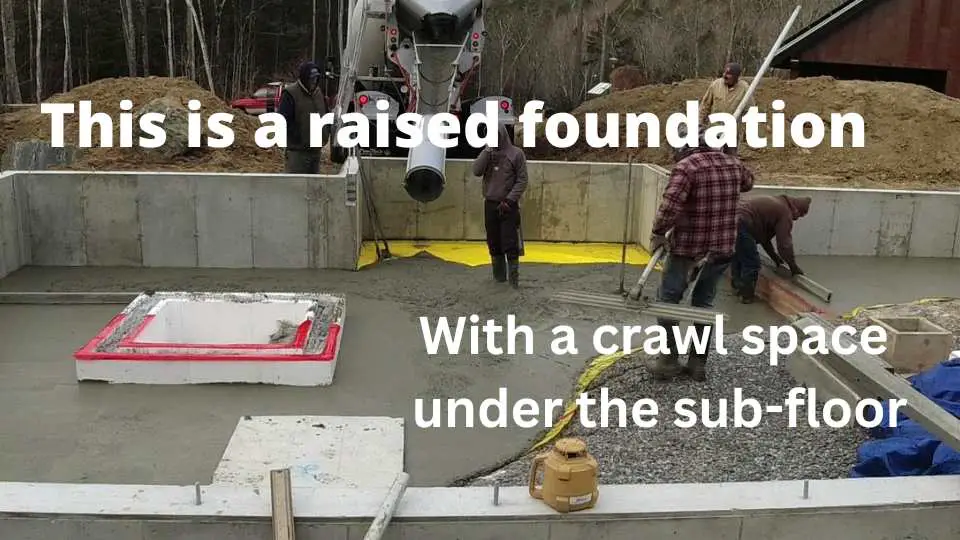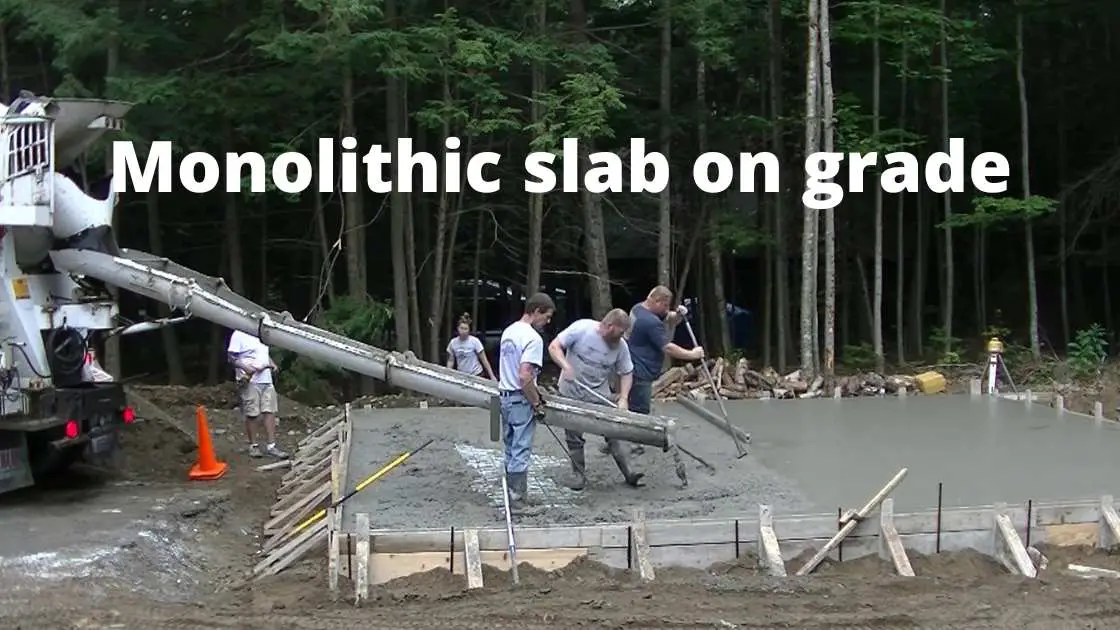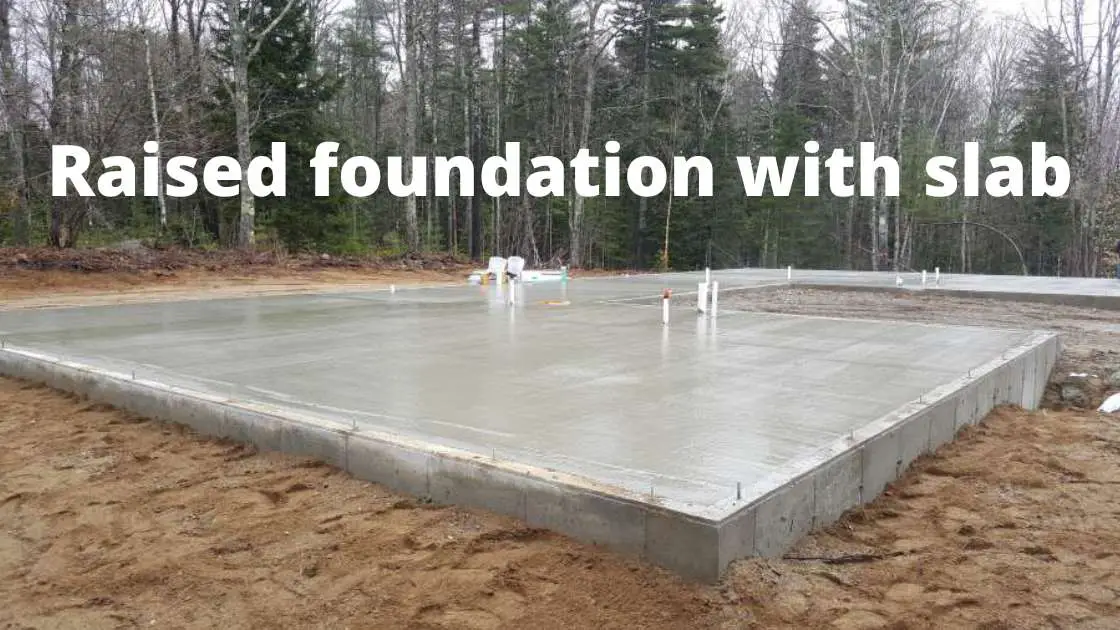The Complete Guide to Understanding
Raised Slab Foundations
What is a raised slab foundation?
A raised slab foundation is a type of foundation where a concrete slab is poured at an elevated level above the surrounding ground.
The raised foundation, in some cases, provides a crawl space between the slab and the ground, which can be used for access to plumbing or electrical systems.
This type of foundation is commonly used in areas with a high water table or where flooding is a concern, as it provides additional protection against water damage.
 This is a raised slab foundation with NO crawl space under the slab.
This is a raised slab foundation with NO crawl space under the slab.For this raised slab foundation, the concrete footings and walls were poured to a depth of four feet below grade.
The inside of the foundation was backfilled with gravel up to six inches below the top of the foundation wall.
All the plumbing and any underground electrical was installed. Then two inches of styrofoam was installed along with a 15 mil vapor barrier.
Next, the concrete slab was poured at four inches thick to match the top of the foundation walls.
The finished concrete floor is a raised slab that's above the exterior grade by 18 inches and above the normal flood zone.
this is a raised foundation with a crawl space slab

The raised foundation above was poured with concrete footings and walls that allow for a crawl space between the concrete slab (which we are pouring in the picture) and the wood sub-floor. (built on top of the foundation walls)
The crawl space allows for plumbing and utilities (if desired) to be done under the first floor decking and can be used for storage also.
The foundation is raised above the exterior grade 12 - 18 inches to keep the main part of the house above grade.
how high is a raise slab foundation?
The height of a raised slab foundation can vary depending on the specific needs of the building project, but typically it is raised between 12 to 24 inches above the surrounding ground.
It's a type of elevated foundation that in some cases provides a crawl space between the home's subfloor and the exterior landscaping, typically being 18 inches to 4 feet above ground.
what's the difference between a monolithic slab and a raised slab
The main difference between a monolithic slab and a raised slab is their elevation relative to the surrounding ground.
A monolithic slab is a type of foundation where a slab of concrete is poured directly on the ground, like in the picture below.

While a raised slab foundation is built with either a crawl space between the slab and the ground, or a slab poured right on top of the raised foundation. (pictured below)
A monolithic slab typically has a lower profile while a raised slab foundation provides more protection against moisture and flooding.

what are the different types of slab foundations?
Here are some different types of slab foundations:
- Monolithic Slab Foundation: A single layer of concrete that is poured directly on the ground, which acts as both the foundation and the floor.
- Raised Slab Foundation: A concrete slab that is poured at an elevated level above the surrounding ground, sometimes creating a crawl space beneath it.
- Post-tension Slab Foundation: A type of concrete slab foundation that is reinforced with steel cables, which are tensioned after the concrete has been poured to increase its strength and durability.
- Frost-protected Slab Foundation: A type of slab foundation that incorporates insulation to prevent frost from penetrating and damaging the concrete in cold climates.
- Slab-on-Grade Foundation: A type of foundation where the concrete slab is laid directly on the ground, but with provisions for thermal insulation and moisture barriers to protect against moisture and temperature changes.
is it cheaper to build on a slab or raised foundation?
Building on a slab on grade foundation is generally less expensive than building on a raised foundation.
This is because a slab foundation typically requires less labor and materials to install vs a raised foundation and slab.
However, building on a raised foundation can offer several benefits such as better protection against moisture and flooding, and easier access to plumbing and electrical systems. (When you have a crawl space)
The choice of foundation type depends on a number of factors such as the local building codes and regulations, the soil conditions at the building site, if you're in a flood zone or not, and the specific needs and requirements of the building project.
important things to consider:
When deciding whether to choose a raised slab foundation, some important things to consider include:
- Local Building Codes and Regulations: Building codes and regulations in your area may dictate certain requirements for foundation types, which could affect your decision.
- Soil Conditions: The soil conditions at the building site can affect the stability and durability of the foundation, and may influence the decision to use a raised slab foundation.
- Flood Risk: If the building site is located in an area that is prone to flooding, a raised slab foundation can provide better protection against water damage.
- Plumbing and Electrical Needs: A raised slab foundation can make it easier to access and maintain plumbing and electrical systems, which can be an important consideration for some building projects.
- Budget: The cost of a raised slab foundation may be higher than other types of foundations, so it is important to consider the available budget for the project.
- Aesthetics: Raised slab foundations may be more visible than other types of foundations, so it is important to consider how it will impact the overall aesthetic of the building.
It's recommended to consult with a licensed, experienced contractor, architect, and engineer to evaluate these factors and make an informed decision.
in conclusion:
If you're considering a foundation type for your home, the decision between a raised slab with a crawlspace and a raised foundation slab comes down to a few key factors.
A crawlspace is a good option if you anticipate future remodeling projects or need easy access to plumbing fixtures, and can also increase the resale value of your home.
However, moisture issues should be taken into consideration, and it's recommended to have the crawlspace sealed and waterproofed to prevent any problems in the future.
While a crawlspace may come with higher upfront costs, it offers more flexibility for future changes.
On the other hand, a raised slab foundation is a great option if you're looking to avoid moisture and allergen issues and don't anticipate any future changes or additions.
Ultimately, the decision between a crawlspace and a raised slab foundation depends on your specific needs, budget, and future plans for your home.














